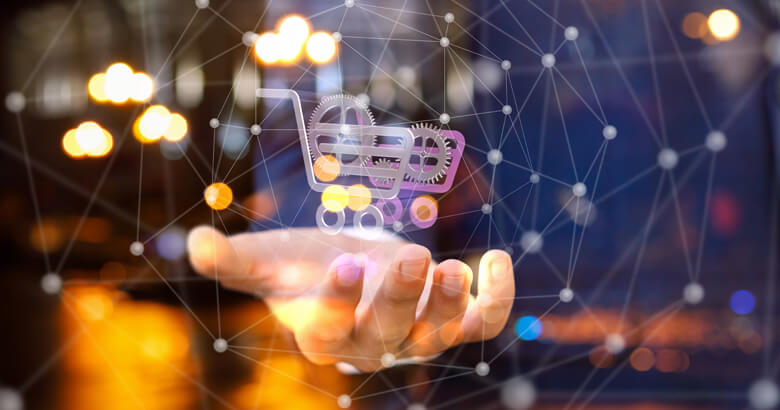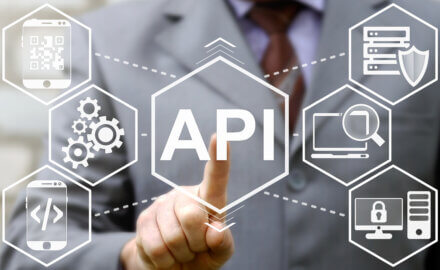Realize Your Harmonized Retail Potential with API Integration

Since March 2020, the number of shoppers buying online has accelerated by three years, increasing to levels we didn’t expect to see until 2024[1]. Everywhere you look, e-commerce is booming, with consumers placing online orders around the clock and expecting status updates for their purchases in real time, whether it’s electronic equipment or groceries.
The future of retail is harmonized
As you saw in my previous post, ‘Get Your Retail Channels Singing in HARMONY with an Integrated Retail Strategy‘, harmonized retail is the future[2]. It’s the evolution of omnichannel, which provides centralized product and customer data across all channels. Creating a harmonized omnichannel retail model requires an integrated retail strategy with the right integration platform that connects both customer facing digital ecommerce systems with back office legacy systems.
By seamlessly connecting all of your business applications, systems and processes, you have more actionable data to understand and engage with customers, satisfy their needs and offer a unified brand experience. Harmonized omnichannel retail synchronizes the in-store experience with the digital experience to eliminate friction points that can disappoint loyal consumers.
A harmonized omnichannel retail model centralizes product and customer data across all channels and blends both legacy and digital technologies with human experiences to optimize the customer journey. You don’t have to be on every channel—you just have to be where your customers are, making sure they get what they want, where, when and how they want it—seamlessly. Indeed, customers who shop online and in stores spend nearly twice as much as customers who shop only in stores[3].
How do retailers successfully implement a harmonized omnichannel retail model, with consumer demands for 24/7 product availability, a consistently personalized shopping experience across multiple channels, and multiple fulfillment points and delivery choices? With a unified integration platform featuring API integration.
API integration drives harmonized retail
By focusing on the customer as the channel and connecting the retail journey across digital and physical channels, a unified platform that enables API integration better eliminates friction points—so retailers can focus on innovating with new and unique ways to create remarkable customer experiences.
APIs can unlock the most value from your data to create a harmonized customer journey—from online ordering to choice of delivery or pickup options and loyalty rewards. Your company can benefit greatly from the combination of speed and flexibility that APIs provide, so let’s look at a few use cases for APIs in retail.
Retail use cases for APIs
Sharing data across multiple lines of business
While multiple lines of business can work independently, they can benefit greatly from sharing data. Retailers that have multiple locations, with data stored in both the cloud and on-premises data centers, can use APIs as a method to direct the flow of data between locations.
Aggregating and analyzing customer information and transactions
Consumers depend on their mobile devices to place orders, check order status and tracking, review their shopping history and personal discounts, and create wish lists. Mobile apps also include information about a retailer’s store locations, product catalog and descriptions, product availability, ratings and reviews—all features designed to encourage consumer engagement while collecting valuable data that retailers can use to market their products more effectively. APIs make all of this possible.
Partnering with more businesses and suppliers
Retailers can connect with suppliers using APIs that allow them to check inventory levels, for example. They can also leverage APIs from shipping companies to facilitate package deliveries and tracking.
Extending your reach to more customers
A travel app, for instance, might recommend clothing for a ski trip. By making its APIs public and available for use with other industry apps, like a travel app, a clothing retailer has greater opportunity to drive additional business from new customers.
Increase brand engagement through social media
Connect social APIs from Twitter and Facebook with your own APIs to connect immediately, and proactively, with feedback from customers. By integrating analytic APIs with Twitter feeds that mention your company, you can quickly determine the best course of action toward resolving customer satisfaction issues—and even turn negative reviews into recommendations by offering product discounts, for example, that convince unhappy customers to do business with you again.
While more and more customers integrate their favorite retail brands into their lives through mobile and social app interactions, retailers can use API integration to promote the development of customer journeys that foster repeat and loyal business. API integration, as part of an integrated retail strategy with a unified integration platform, helps produce the consistent and completely fluid customer journeys of the future (and today), known as harmonized omnichannel retail.
Visit our Retail page for more information, and check out the paper, ‘5 Reasons Why You Need Harmonized Retail Connections.’, you find the document as download at the end of this article.
SEEBURGER simplifies complex connections between clouds, applications and people, so you can focus on what matters. Share business-critical data. Make split-second decisions. Operate at scale. It’s all possible, with SEEBURGER Integration – a mix of our technology, our services and our people – all here for the sole purpose of accelerating your business.
[1] https://www.forbes.com/sites/stevendennis/2019/06/03/omnichannel-is-dead-the-future-is-harmonized-retail/
[2] https://www.infosys.com/iki/insights/largest-physical-retailer.html
[3] https://www.globalbankingandfinance.com/e-commerce-trends-for-2021-is-omnichannel-2-0-the-way-forward/
Thank you for your message
We appreciate your interest in SEEBURGER
Get in contact with us:
Please enter details about your project in the message section so we can direct your inquiry to the right consultant.
Written by: Brent Tisdale
Brent Tisdale is a Vice President of OmniChannel Sales at SEEBURGER, a global market leader in business integration software. He has more than 30 years’ experience working for luminary companies like IBM and General Electric where he has streamlinedcomplex business processes for many industries including Retail, CPG and Discrete Manufacturing. He has a Six Sigma Greenbelt earned from his years with GE which he utilizes to gain a deep understanding of business process challenges and the suggested integration options. He was the Co-captain of the 1979 Holiday Bowl Champions. The first Bowl game ever won by Indiana University (Bloomington) Football team.





